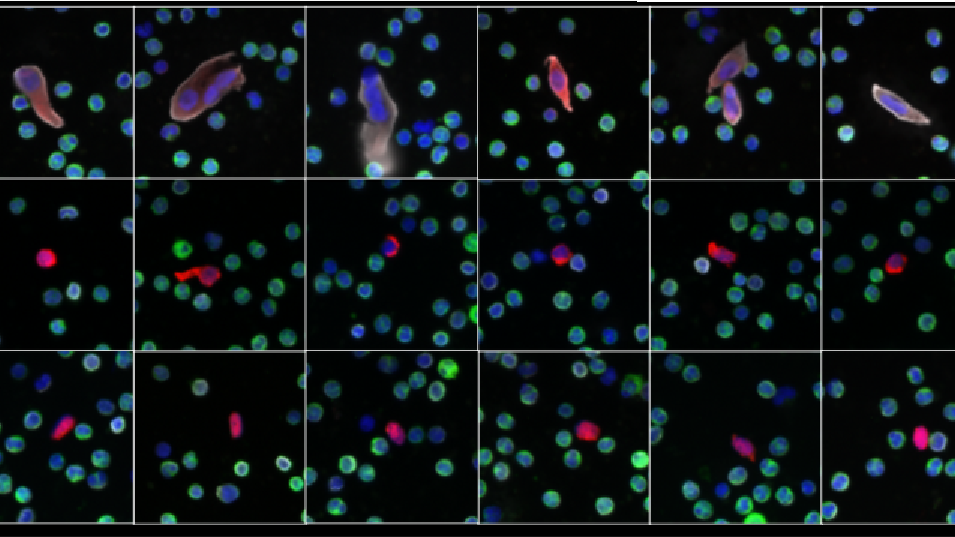
Characterizing Public Radiotherapy Dataset Demographic Information
Here we identified 81 public radiotherapy datasets from the Cancer Imaging Archive and the Cancer Genome Atlas and compiled available demographic information including patient age, race, and sex. We then compared this information with publicly available population data for cancer patients in the US, finding that publicly available datasets often do not accurately represent the cancer patient populations. This work was presented at ASTRO 2025. An interactive project website can be found here.
Characterizing Public Radiotherapy Dataset Demographic Information
Identifying pontential sources of bias in radiation oncology research. See project website here.

Using Graphs to Model Radiotherapy Outcomes in Head and Neck Cancer
This project presents a new method for radiomic analysis based upon unsupervised region of interest identification, specifically in the context of head and neck squamous cell carcinoma. By modeling features from both tumor and non-tumor regions, we hope to more completely leverage imaging information to predict the incidence of locoregional recurrence and distant metastasis following radiotherapy. This work has been accepted as an oral presentation at RSNA 2023 and will be submitted as a manuscript in late 2023.
Using Graphs to Model Radiotherapy Outcomes in Head and Neck Cancer
Developing a new framework for radiomic analysis based upon computational graphs and patient anatomy.

Predicting Brain Metastases Response to Radiation
As part of my thesis work, I have been investigating the value of computationally derived radiomic signatures for treatment response prediction in brain metastases patients receiving radiotherapy. These radiomic signatures are able to capture textural and structural features from MRI scans and radiation dose maps (used to plan radiation treatments), and can be used to predict whether a patient might have tumor recurrence. Preliminary experiments have demonstrated promising results, and demonstrate the potential for computer vision approaches to predict which patients should receive radiation based on pretreatment imaging. A first version of our work published in SPIE Medical Imaging can be found here. A manuscript is additionally in submission.
Predicting Brain Metastases Response to Radiation
Using radiomics and dosiomics to characterize tumors with imaging and treatment planning data.

Modeling Hitting Streaks in Major League Baseball
In an attempt to win the MLB "Beat the Streak" competition, I am developing computational methods for data acquisition and modeling for hitting streaks in professional baseball. To do so I have created novel datasets and analysis pipelines. Currently, my model has achieved a streak of up to 24 days, outperforming existing approaches. Relevant code, write-ups, and workbooks can be found in blog posts and in this github repository. Unfortunately, the MLB has decided to remove public access to their API, making it more difficult to access data necessary for this project. I hope to revisit and rework this project in the future using alternative data sources.
Modeling Hitting Streaks in Major League Baseball
Beating the streak with machine learning for baseball analytics.

Equitable Vaccine Distribution in the COVID-19 Pandemic
As part of the PathCheck Foundation in collaboration with the Massachusetts Institute of Technology, I have worked to develop an efficient, privacy-focused, and equitable vaccine distribution framework for the COVID-19 pandemic. Further details regarding our proposed digital solutions can be found at our open-source Github page.
I have also served on the leadership committee for the Vaccines for All Conference hosted at MIT which hosted leaders across industry, academia, and the government to discuss the current landscape of issues and solutions in the COVID-19 pandemic. A pre-print of the position paper for that conference can be found here.
Equitable Vaccine Distribution in the COVID-19 Pandemic
Public health innovation in COVID-19 and future pandemic vaccine distribution and preparedness.

Computational Analysis of Chest X-ray in COVID-19
In this study, we developed a complete pipeline for analysis of chest x-rays to predict clinical outcomes of mechanical ventilation requirement and mortality in COVID-19 patients. Both radiomic and deep learning approaches were explored, and important pre-processing techniques were applied to a multi-institutional dataset to increase the generalizability of the proposed models. Significant results include the ability to predict future mechanical ventilation requirement and mortality for COVID-19 patients from baseline chest x-ray analysis. This has the potential to inform treatment decision-making and avoids common pitfalls in similar studies. The work is currently published in the journal Diagnostics.
Computational Analysis of Chest X-ray in COVID-19
Radiomic and deep-learning to model clinical outcomes in COVID-19 patients using chest x-rays.

Proteomic and Genomic Analysis of Circulating Tumor Cells in Metastatic Prostate Cancer
This study was part of a clinical trial for a novel therapeutic anti-cancer drug. Using the unique capabilities of the High-Definition Single Cell Assay fluid biopsy platform developed by the Convergent Science Institute in Cancer at the University of Southern California, I studied the genotypic and phenotypic characteristics of clonal subpopulations in the blood and bone marrow of prostate cancer patients. The results from this study and future work might further elucidate the relationship between different circulating tumor cell subtypes and disease progression. My master's thesis for this project can be found here.
Proteomic and Genomic Analysis of Circulating Tumor Cells in Metastatic Prostate Cancer
Master's thesis on the effects of a chemotherapy agent in the treatment of metastatic prostate cancer.






